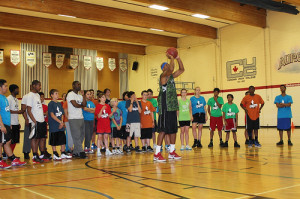Cambourne’s Conditions of Learning


Coaches often search for the smallest details to give them the edge and some principles imbedded in Cambourne’s Conditions of Learning might just be a way of gaining that advantage. Doctor Brian Cambourne develop a set of seven conditions which lead to enhanced learning. These different conditions if present within the learner’s experiences help to make efforts in teaching more efficient and effective. For coaches then it is worth thinking about these conditions in a sporting context to see if they can be incorporated (if not already) and enhanced if at present exist.
The seven Cambourne’s Conditions of Learning include:
Immersion: This is the initial stage and where athletes may need to be introduced to the specific technical skill and the context in which it would be used in a game. For example explaining the appropriateness of passing with the arm away from the defender (Push Pass) when being guarded in a high pressure situation. The alternative in this context would be employing a two-arm pass (Chest Pass) when the defence is giving ample space to perform the action safely.
Other points that may be of assistance when thinking about the immersion condition is to examine the overall atmosphere created during a training session. Expectations such as training at a game pace, using specific technical language are all examples of how and athlete can become immersed in the culture of a team or program.
Demonstration: This condition of learning is probably one of the more easily observe aspects of a training session. During this characteristic athletes need to have an opportunity to observe the technical or tactical skill. Functional Basketball Coaching often states the important of demonstrating skills as a crucial activity when introducing new drills. This can be either a demonstration by a coach or athletes being used as the exemplar. Either way the athletes have an opportunity to analysis what is happening without being directly involved (demonstrating roles for athletes should be rotated so everyone has the opportunity to only observe an some stage).
Expectation: A point sometimes overlooked during training sessions is with each activity expectations need to be established about what standards are required in performance. Providing expectations to athletes, provides a goal.
Even if the athletes do not obtain that goal initially this will provide a target to aim for and work towards. Being able to set realistic and challenging goals will keep a individual more focused and on the road to making better results sooner.
Responsibility: In setting the expectations, then make players accountable for their actions and performance. Challenge the individual to work hard and improve through perfect practice. Responsibility is the key that unlocks the door to accountability and ownership by players about the team and its performance as a whole. In the end, it is this responsibility that will define a team’s culture.
Approximation: While expectations are focused on the individual and their abilities, approximations are about the group and what the next step in the progression is likely to be. For coach familiar with a particular type of offense they will know how long each aspects takes to understand and implement and can therefore react and push the group faster or slower depending on what they see on the floor.
Approximation is about what can be seen on the floor, but is mastered only by the knowledge of the coach about the skill or strategy being practiced. A coach must have a good understanding to master the timing needed to keep all the balances and checks in place and running smoothly within the team’s development.
Practice/Use: Moving on from demonstrating in Cambourne’s Conditions of Learning is when the athletes themselves have an opportunity to practice the skills being taught. Making mistakes, finding out how to use the skills and then refining the action are all aspects of the use condition.
Feedback: The final characteristic of Cambourne’s Conditions of Learning is all about providing input into what an athlete is doing. Feedback as a coach is probably one of the most important aspects of coaching. Continuous directive (not exclusively critical) feedback helps provide and insight into the athlete’s performance they themselves cannot see. Coaching on the run helps take your ability to provide feedback to another level during training sessions and should be employed constantly.
So when reflecting back on Cambourne’s Conditions of Learning the real important point to note is that if teaching or coaching is happening in an effective way these seven characteristics will be present. Thinking about how a training session should be constructed and breaking that down to each specific drill should reveal Cambourne’s Conditions of Learning. If a coach’s instruction or teaching does not fulfil these conditions, then maybe some refinement in the coaching craft can be implemented.


